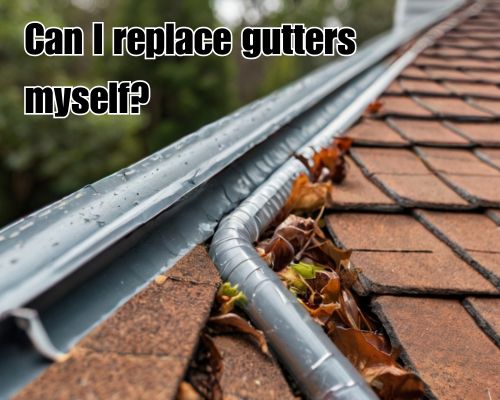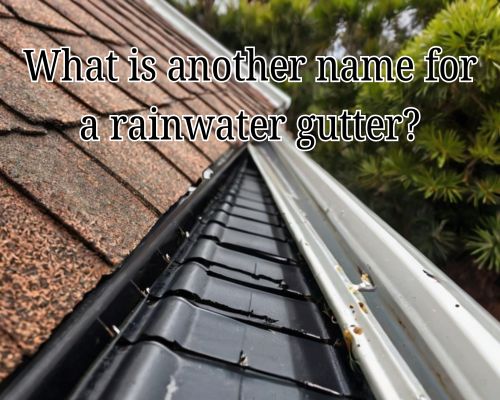Can I Replace Gutters Myself? A Homeowner’s Guide in West Palm Beach, Florida

Can I Replace Gutters Myself? A Homeowner’s Guide in West Palm Beach, Florida
When the rainy season strikes in West Palm Beach, Florida, well-functioning gutters aren’t a luxury—they’re a necessity. With the area’s frequent tropical downpours and high humidity levels, gutters protect your home from water damage, mold growth, and costly foundation repairs. So it’s no surprise that many homeowners wonder: “Can I replace gutters myself?” The answer? Yes—but only if you know what you’re getting into.

With Mike Owen from Gutters of West Palm Beach, let’s walk through the pros, cons, process, and critical local considerations for DIY gutter replacement in West Palm Beach, so you can make a smart, informed decision before climbing that ladder.
Why Gutters Matter in West Palm Beach
West Palm Beach is known for its beautiful beaches, lush landscaping, and warm subtropical climate. But with an average annual rainfall of over 60 inches and frequent storms during hurricane season, effective gutter systems are crucial. Gutters redirect water away from your home’s roof, siding, and foundation, preventing:
- Wood rot on fascia boards and soffits
- Soil erosion around the foundation
- Water intrusion into basements or crawl spaces
- Mold growth in siding and walls
If your existing gutters are sagging, leaking, or rusted, it might be time for a replacement. But should you call a roofing contractor or go the DIY route?
Can You Replace Gutters Yourself?
The short answer is yes—but with a few big “ifs.”
DIY gutter replacement is entirely possible if you:
- Have the right tools
- Understand how gutters function
- Know the building codes in Palm Beach County
- Feel comfortable working on a ladder
However, just because you can doesn’t always mean you should.
Pros of DIY Gutter Replacement
- Cost Savings
Hiring a licensed contractor in West Palm Beach could cost between $1,000 to $2,500 for full gutter replacement on an average-sized home. By doing it yourself, you might cut costs by 40–60%, especially if you already own tools like ladders, drills, and sealant guns. - Scheduling Flexibility
No need to wait for a contractor’s availability—install on your own timeline, especially useful in the off-season or pre-hurricane preparation. - Learning Experience
DIY home improvement builds skills, confidence, and pride. Plus, it gives you firsthand knowledge of your home’s infrastructure.
Cons of DIY Gutter Replacement
- Safety Risks
West Palm Beach homes often feature elevated rooflines or slippery tile roofing. Falling from a ladder while handling long gutter sections is a real danger. - Improper Installation Risks
If you miscalculate gutter slope, forget to align downspouts, or fail to seal joints properly, you could cause more harm than good. - Warranty and Insurance Conflicts
Some homeowner’s insurance policies or roofing warranties may become void if work isn’t done by a licensed professional. - Permit Requirements
In Palm Beach County, certain exterior modifications might require a permit. Always check with the Palm Beach County Building Division before starting your project.
Tools and Materials You’ll Need
Before you commit to a DIY replacement, make sure you have access to the following:
- Aluminum or vinyl gutter sections (5” K-style is standard)
- Gutter hangers and screws
- Downspout extensions and elbows
- Gutter sealant
- Level and chalk line
- Measuring tape and tin snips
- Power drill and ladder
- Safety harness (especially for two-story homes)
If you’re replacing gutters near palm trees or around oceanfront properties, consider salt-resistant aluminum or copper to prevent corrosion from salt air—an important detail in coastal West Palm Beach neighborhoods.
Step-by-Step: How to Replace Gutters Yourself
- Inspect and Remove Old Gutters
Detach all hangers, brackets, and downspouts carefully. Take note of how the system was configured. - Evaluate the Fascia
Check if the wood behind your old gutters is rotted. In humid Florida climates, fascia board replacement is often necessary. - Measure and Cut
Use a chalk line to establish proper pitch (around ¼ inch of slope for every 10 feet). Cut your new gutter sections accordingly. - Install Brackets
Secure gutter hangers every 2 feet. Improper spacing can cause sagging during torrential downpours. - Attach Gutters and Downspouts
Snap or screw gutter sections together, using sealant at joints. Attach downspouts so water is directed away from the foundation—critical in flood-prone areas like El Cid, Northwood, or SoSo (South of Southern). - Test the Flow
Use a garden hose to test drainage. Ensure no leaks, sagging, or pooling.
When to Call a Professional in West Palm Beach
DIY might be feasible for a single-story home with straightforward gutter lines. But if you notice any of the following, it’s wise to call a local expert:
- Complex rooflines or steep slopes
- Signs of roof damage or water intrusion
- Gutter installation over solar panels or HVAC units
- Two-story homes with accessibility challenges
Look for licensed roofing or gutter contractors in West Palm Beach like Gutters of West Palm Beach who are familiar with local weather patterns and wind load requirements set by Florida Building Code.
Local Tip: Florida’s Climate Is Brutal on Gutters
The Sunshine State’s mix of UV radiation, salt air, and torrential rain shortens gutter lifespan. In West Palm Beach, opt for seamless aluminum gutters with baked enamel finishes or even galvalume if budget allows.
Want added protection? Consider installing gutter guards to keep palm fronds and sand out of your system—especially useful in neighborhoods like Flamingo Park or Grandview Heights.
Final Verdict: Can You Replace Gutters Yourself in West Palm Beach?
Yes—but only if you’re prepared, patient, and detail-oriented. For a single-story home and basic layout, DIY gutter replacement can save money and be highly satisfying. But in West Palm Beach, where heavy rain, high humidity, and unique environmental factors come into play, it’s not a task to underestimate.
If you’re unsure—get a quote from a local expert. Better safe (and dry) than sorry.






